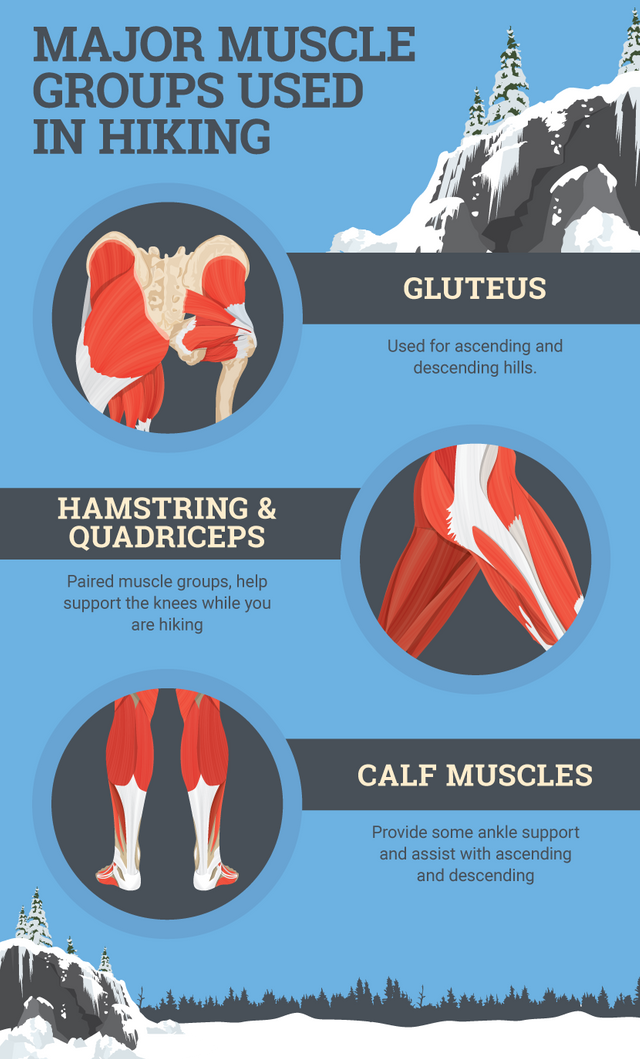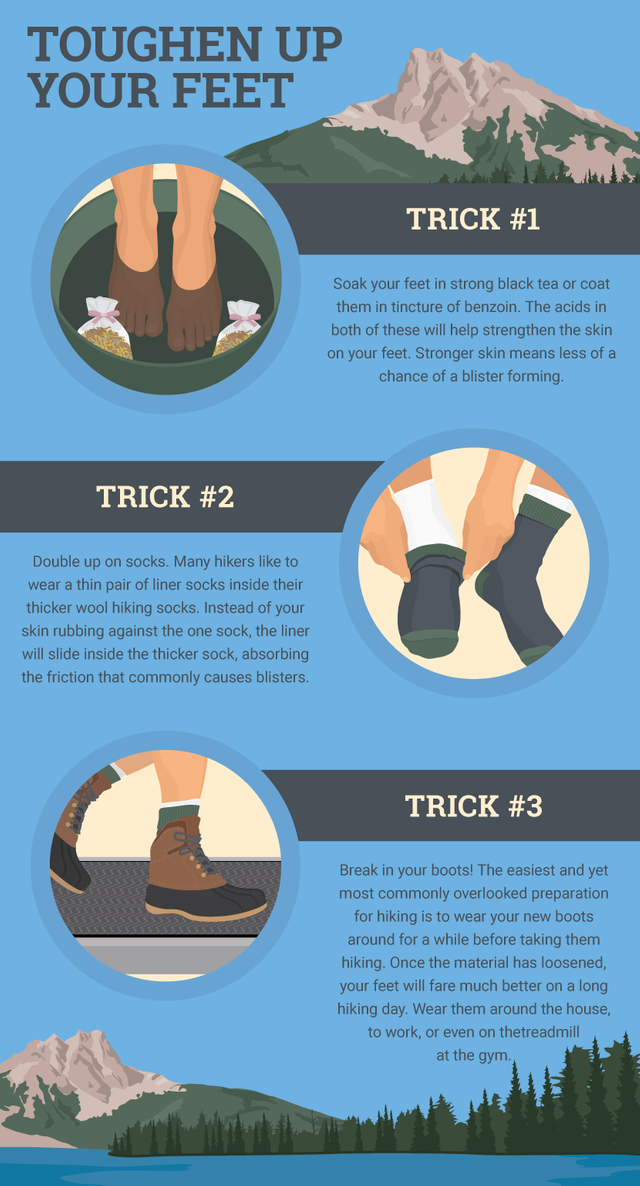Train For Any Hike Avoid Injury by Stretching and Training
People join The Mountaineers from many walks of life and with varying levels of expertise. Check out these training ideas from Alison Hudson at PartSelect if you want to get started in the outdoors or improve your fitness. Hudson is a field instructor at the National Outdoor Leadership School and a freelance writer who has written for The Clymb and Outdoor Nation. In this article, she discusses how to train in the city, prepare for downhills, and build mental toughness.
How do you get in shape for hiking if you live in a city and don't have time during the week to hit the trails? Here are some recommendations for people of all fitness levels who want to improve their hiking skills without going to the mountains.
.png)
Hiking works out several of the body's major muscle groups while also enhancing cardiovascular and pulmonary health. Climbing uphill works the glutes, quadriceps, hamstrings, knees, and calves, but trekking downward uses the ankles, feet, and hips. In a nutshell, hiking is a full-leg workout. Furthermore, whether you're hiking up or down, uneven terrain needs a strong core for proper balance. If you want to tone your arms, hike using trekking poles, which help to reduce the stress on your knees by transferring it to your arms.
HOW TO TRAIN IN A CITY
There are several machines at gyms that can assist develop the muscles utilized for hiking. Using these equipment can be a quick method to get into decent hiking shape if you enjoy going to the gym. A day on the trails can be especially taxing on the quadriceps, the broad muscular group that runs across the top of your legs above the knee. The quads are used to bend, straighten, and support your knees while trekking. Your quads will burn during long or steep ascents since they are activated more than when hiking or strolling on a flat sidewalk.

The stair climber machine is an excellent place to start because climbing steps is quite similar to trekking uphill. Treadmills are another viable alternative. Most treadmills include an inclination function that allows you to increase the angle to simulate a hill. Most top out around 12%, which is less steep than most treks, but this is still an excellent location to begin. Begin by ascending for 10 or 15 minutes on either the stair climber or the treadmill. Do not go too fast! This is a common mistake made by inexperienced hikers, and it can lead to pain and anguish. Instead of taking frequent pauses, you should go at a pace that allows for conversation. After 10 or 15 minutes, either lower the treadmill's angle or slow down the stair climber. Continue walking at an easy speed for seven minutes before returning to the tougher angle.
If the gym isn't your thing or doesn't fit your budget, there are plenty of other training possibilities. One of the most straightforward is to avoid the elevator and use the stairs. Take a few flights during your work breaks, or utilize your lunch break to get a good stair workout in. Make sure to walk up and down stairs to prepare your body for the effort of hiking downhill. Running is another exercise that helps people get in shape for hiking because it frequently incorporates hills and builds a strong cardiovascular system. If you're new to running, walking up hills may make sense. For those with a greater baseline fitness, consider running up hills; the extra cardio will assist your lungs and body prepare for the hard work of trekking in the mountains.

A common mistake is to train without a backpack. Practice for success: if you plan to hike with a large pack, make sure you walk, run, or go to the gym with it. Textbooks and weights work wonderfully. You don't want to do this every time you train, but a few times will assist your body adjust to the greater effort necessary when wearing a pack and allow you to break in the pack a little better. Another useful advice is to wear your hiking boots around to break them in. It may seem like a little detail at home, but prepping your feet to avoid blisters is critical. Blisters can stop someone in their tracks long before they become exhausted from going uphill.
TRAIN FOR THE DOWNHILLS
climbing uphill can be painful, but climbing downhill demands more energy. The extension of your legs during downhill stretches can be more stressful on your quadriceps than uphill action. Going downhill often requires more stabilizing muscles and tendons in your legs, particularly those in your ankles. Hikers are more prone to twist an ankle travelling downhill than uphill due to the added momentum. Include some downhill motions in your training to ensure that your body is ready for the "easy" sections of your hike. This is when real stairs come into play, but a large box could suffice in a hurry. In any case, spend a portion of your workout walking down sets of stairs or performing step-downs from a huge box at the gym.
MENTAL
It's amazing how much hiking relies on cerebral skill rather than physical aptitude. For most trails and most people, if you have the determination to keep going, you will complete the hike in one piece. It may take a long time and require numerous breaks, but this is not how a hike is evaluated. A successful trek is venturing outside and into nature, whether for a half-mile, an hour, or several days. You select a goal and explain what it means to achieve that goal. Get outside, enjoy the fresh air, and be proud of your accomplishments.